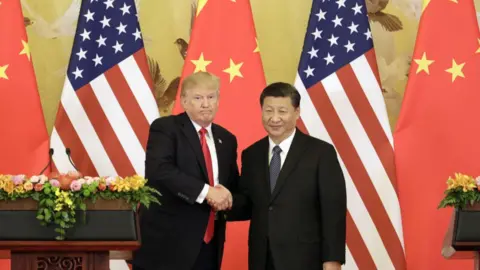The construction of the Motuo Hydropower Station, presided over by Chinese Premier Li Qiang, signals a major investment in renewable energy, costing an estimated 1.2 trillion yuan ($167 billion). The project, located in the Yarlung Tsangpo canyon—recognized as the world's deepest and longest canyon—is expected to surpass the Three Gorges Dam in energy production capacity. However, this ambitious venture has faced backlash from neighboring countries concerned about its potential effects on water supply and ecological balance.
Local media reports indicate that Beijing is advocating ecological protection and the economic benefits of the dam for local communities. Nonetheless, experts fear that the dam will give China increased control over the river's flow, which is crucial for millions reliant on its waters downstream in India and Bangladesh. Indian officials have underscored how the dam could threaten livelihoods in Arunachal Pradesh and Assam, where Indigenous tribes depend on the river for sustenance.
The chief minister of Arunachal Pradesh, Pema Khandu, labeled the situation an "existential threat," warning that sudden water releases from the dam could devastate local ecosystems and communities. In light of these apprehensions, India's ministry of external affairs has previously urged China to consider the repercussions of such mega-dams on neighboring nations.
Beijing, however, maintains its position, asserting a "legitimate right" to develop projects on its river systems. Simultaneously, Bangladesh has also expressed its concerns, seeking clarity from China regarding the dam's implications.
In a broader context, China views the hydropower project as essential for addressing its massive energy demands, especially as part of a strategy labeled "sending western electricity eastwards." While aimed at reducing pollution and generating clean energy, critics point to historical abuses of Tibetan land and livelihoods in the process.
Moreover, environmentalists emphasize the ecological risks accompanying the dam, especially in a seismically active region. Past protests against dam projects in Tibet have led to arrests, highlighting the deep-seated tensions surrounding these developments.
As this monumental project begins, the dialogue surrounding water rights and environmental protection across Asia remains contentious and urgent.
Local media reports indicate that Beijing is advocating ecological protection and the economic benefits of the dam for local communities. Nonetheless, experts fear that the dam will give China increased control over the river's flow, which is crucial for millions reliant on its waters downstream in India and Bangladesh. Indian officials have underscored how the dam could threaten livelihoods in Arunachal Pradesh and Assam, where Indigenous tribes depend on the river for sustenance.
The chief minister of Arunachal Pradesh, Pema Khandu, labeled the situation an "existential threat," warning that sudden water releases from the dam could devastate local ecosystems and communities. In light of these apprehensions, India's ministry of external affairs has previously urged China to consider the repercussions of such mega-dams on neighboring nations.
Beijing, however, maintains its position, asserting a "legitimate right" to develop projects on its river systems. Simultaneously, Bangladesh has also expressed its concerns, seeking clarity from China regarding the dam's implications.
In a broader context, China views the hydropower project as essential for addressing its massive energy demands, especially as part of a strategy labeled "sending western electricity eastwards." While aimed at reducing pollution and generating clean energy, critics point to historical abuses of Tibetan land and livelihoods in the process.
Moreover, environmentalists emphasize the ecological risks accompanying the dam, especially in a seismically active region. Past protests against dam projects in Tibet have led to arrests, highlighting the deep-seated tensions surrounding these developments.
As this monumental project begins, the dialogue surrounding water rights and environmental protection across Asia remains contentious and urgent.





















